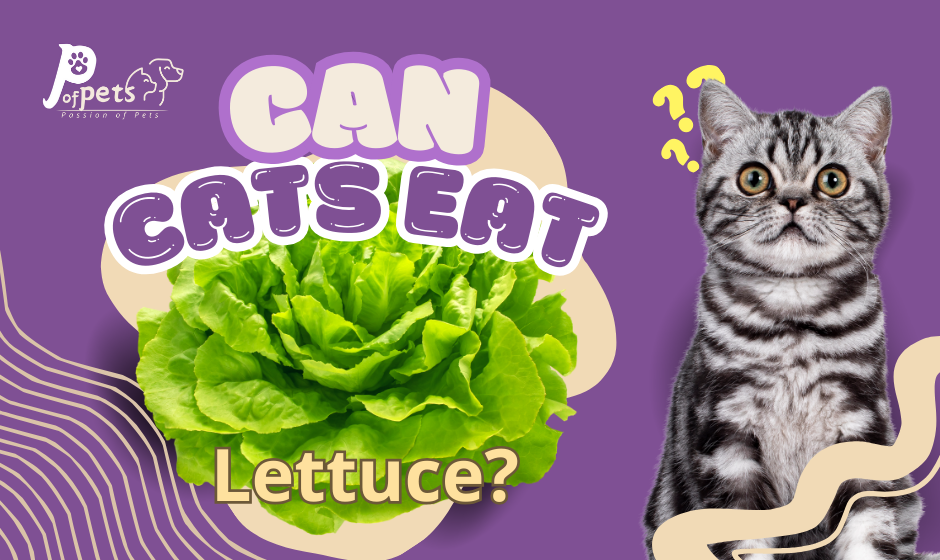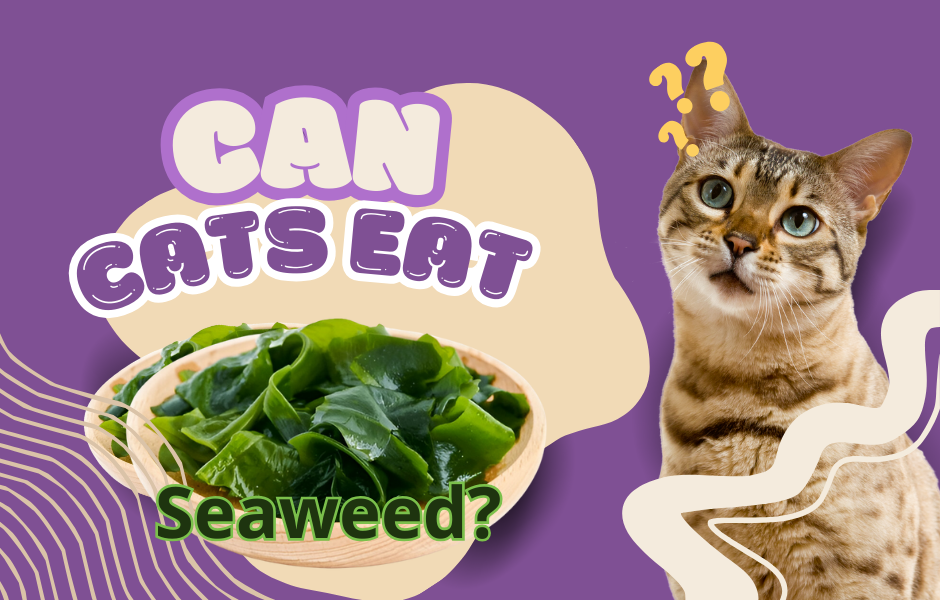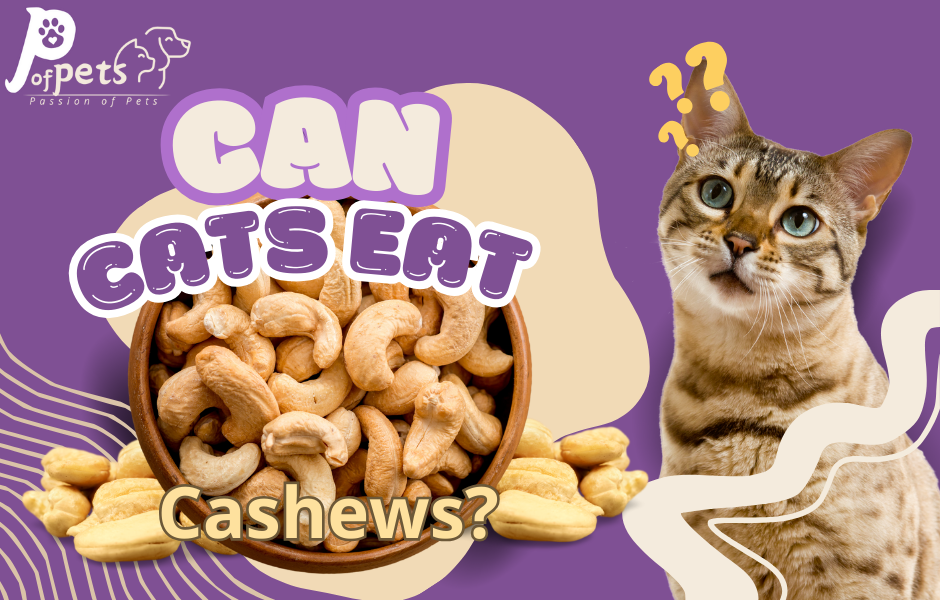Can Cats Eat Lettuce?
Cats are carnivorous animals; this means that their diet consists almost entirely of meat to satisfy nutritional requirements. Being a cat owner, though, one question may be raised: can cats eat lettuce? Whether it be a curiosity driven by your feline’s interest in your salad or the need to introduce variety into their diet, it is important to understand the implications of feeding lettuce to cats. This post will outline the benefits, risks, and best practices for feeding lettuce to your feline friend.
1. Understanding a Cat’s Natural Diet
Cats are obligate carnivores, which means their body structure is designed to digest and thrive on a diet mainly composed of animal protein. Unlike omnivores or herbivores, cats have certain nutritional needs-specific amino acids such as taurine-that they acquire from meat sources.
Their digestive systems are not optimized to process large portions of plant material, which doesn’t mean they can’t enjoy small portions of certain vegetables, including lettuce. Understanding this basic dietary need puts into better context how lettuce might fit into their nutrition.
2. Can Cats Eat Lettuce Safely?
The short answer is yes, cats can safely eat lettuce in moderation. Lettuce is non-toxic to cats and can be a low-calorie treat for your feline. However, it’s important to note that lettuce should not replace a cat’s primary diet, as it lacks the essential nutrients that cats need to stay healthy. Feeding lettuce responsibly ensures that your cat’s dietary balance remains intact.
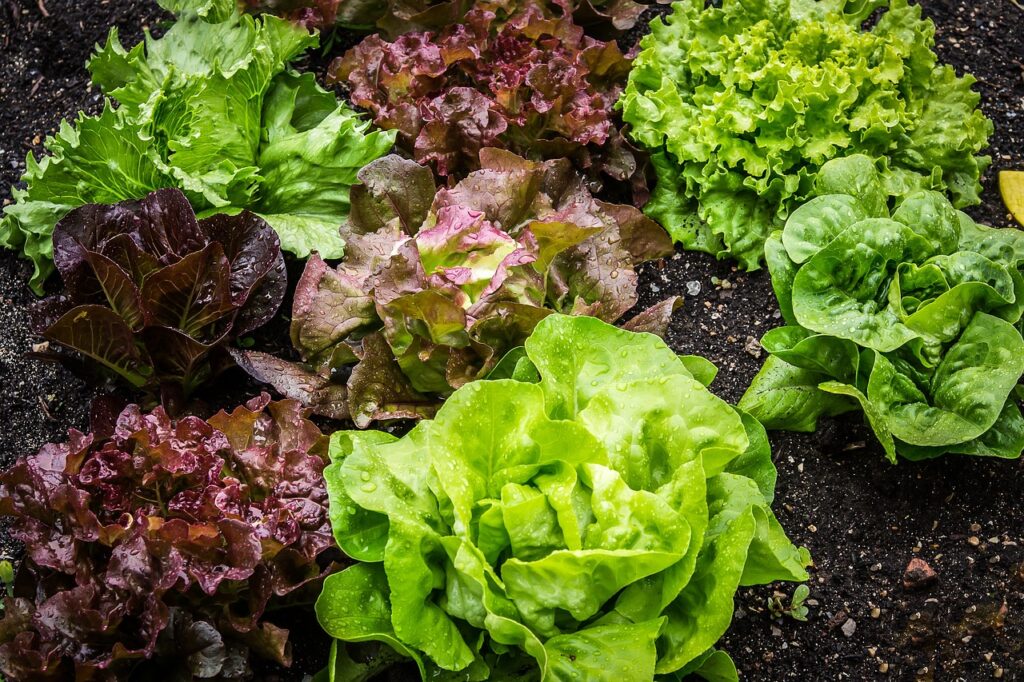
Image by Th G
3. Nutritional Profile of Lettuce
- Water Content:
- 95% Water: This high water content makes lettuce an excellent choice for hydration, especially in salads or as a fresh snack.
- Caloric Value:
- Low in Calories: Lettuce is very low in calories, making it an excellent option for those looking either to maintain or lose weight.
- Vitamins:
- Vitamin A: Very important for vision, immune function, and the skin.
- Vitamin C: Antioxidant, good for the immune system, skin, and bony injuries.
- Vitamin K: Important in blood clotting, thus necessary for good bones.
- Minerals:
- Calcium: Builds bones and strengthens muscles.
- Potassium: Controls the proper fluid balance within the body and influences the work of the heart and muscles; helps nerve cells work right.
- Magnesium: Present in more than 300 different enzymatic reactions throughout the body; hence, these help with and activate processes regarding energy production in muscles.
- Fiber:
- High in Fiber: In nutrition, the fiber really aids in digestion, maintaining healthy bowels, and also promoting the sensations of satiety useful for weight control.
- Antioxidants:
- Antioxidants: They protect cells against free radicals; they support cell health and are known to potentially help reduce risks of chronic diseases.
Human Relevance
To humans, lettuce is a healthy inclusion in a balanced diet; it has high water content, low caloric value, thus very good for anyone who wants to stay hydrated and reduce weight. The vitamins and minerals from lettuce help contribute to general health, supporting various body functions such as vision, immunity, and bone health. The fiber content helps in digestion, gut health.
Implications for Cats
Lettuce does not harm cats; yet, it is not needed by them, either. Cats are obligate carnivores; their prime nutrition source is animal-based. Here is why lettuce should only be an occasional treat:
- Minimal Nutritional Benefit: Vitamins and minerals in lettuce come in very small amounts that do not contribute significantly to the nutritional needs of a cat.
- Digestive System: The digestive system in cats is not set up to digest a great deal of fiber. While a bit of fiber will help digestion, too much will cause gastrointestinal problems.
- Hydration: Although the high water content in lettuce can help with hydration, cats usually obtain most of their water from their food, especially if wet food is fed.
Lettuce is healthy, waterly, low-calorie human food packed with crucial vitamins, minerals, and dietary fiber. Lettuce can be fed to a cat from time to time, but this must not turn into regular feeding in your cat’s life. Changes to a pet’s diet should always be consulted with a veterinarian so proper foods and safe foods for your pet can be recommended.
4. Potential Lettuce Benefits for Cats
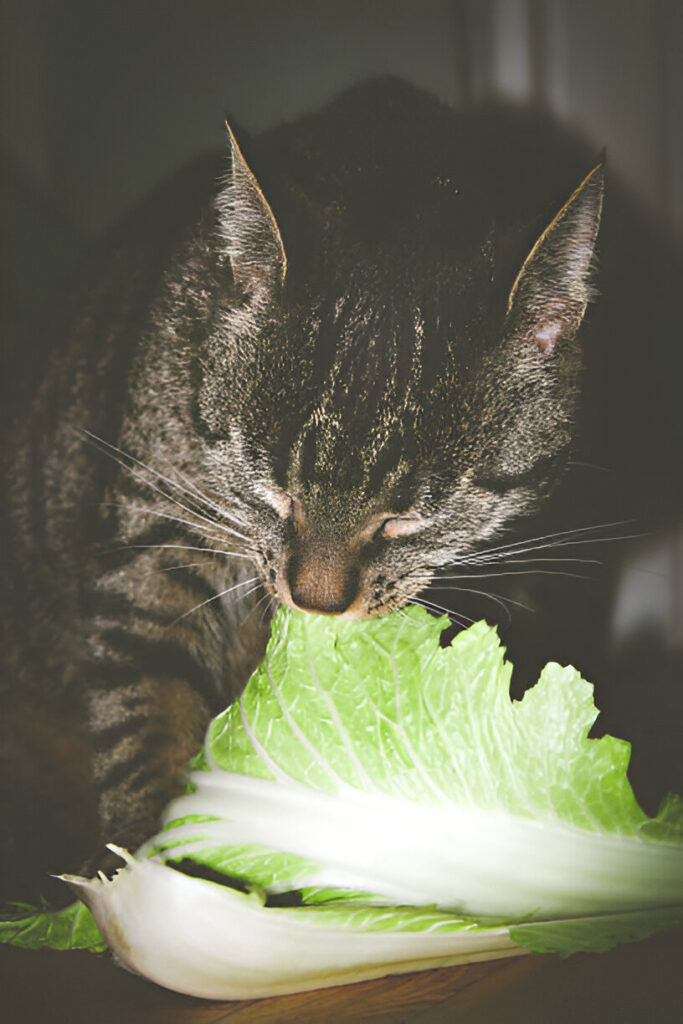
Although lettuce is not a dietary necessity for cats, it has several limited benefits that can help in the general well-being of your feline friend if given in moderation:
a. Hydration
Cats are notorious for their low water intake, especially if they primarily eat dry kibble. Lettuce, with its high water content, can serve as a supplementary source of hydration. This is highly useful for cats prone to problems in the urinary tract or kidneys as this proper hydration helps in sustaining the function and overall health of kidneys. To extend it, one may add little lettuce in food so as to hydrate your cat’s body naturally, a bit more, using his foods.
b. Low-Calorie Treat
For cats, it is the crunch of fresh lettuce that goes well as an alternative to calorie-laden commercial treats. That makes it an ideal snack for overweight or obese cats since they get their fix of a treat without adding pounds they don’t need. An added bonus is owners can feel less guilty indulging their feline friends, knowing lettuce won’t go against their weight management goals.
c. Dietary Enrichment
Adding small pieces of lettuce to your cat’s diet can offer mental stimulation and a change of pace. Cats are naturally curious animals, and investigating new textures and flavors can make their daily routine more interesting. This type of enrichment is especially good for indoor cats, as it adds an element of surprise to their mealtime or snack time. Offering lettuce occasionally can stimulate their senses and keep them interested in their food.
Important Considerations
- Always wash the lettuce well because it contains pesticides and other contaminants that your cat should not eat.
- Cut it up into small portions to avoid a choking hazard.
- Let your cat eat lettuce in moderation, since their digestive system can’t handle it in big amounts.
While lettuce is not a substitute for a healthy diet in cats, it is a fun, hydrating, low-calorie addition to their meals.
5. Risks of Feeding Lettuce to Cats
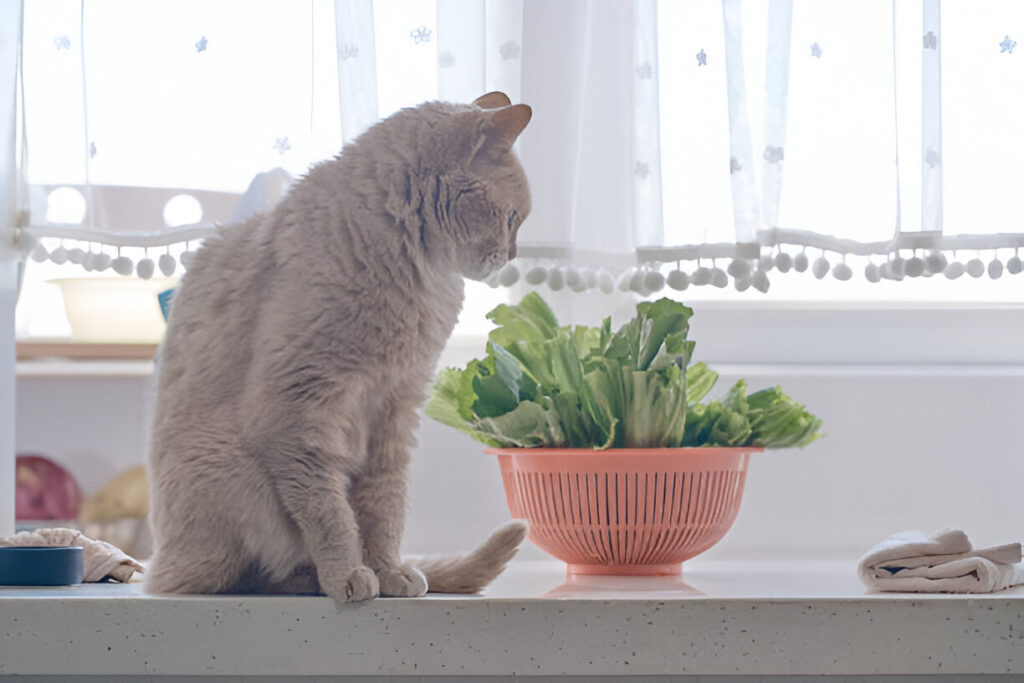
While lettuce is generally safe for cats, there are a few potential risks to be aware of:
a. Digestive Upset
Their digestive systems are not adapted to take much of the plant material. In case lettuce is overfed, your cat may face:
Diarrhea
Vomiting
Stomach upset
For minimizing these risks, introduce lettuce gradually and in small pieces.
b. Choking Hazard
The leaves can be quite a task for cats to chew and swallow especially if they are given in big pieces. Always cut them into small, manageable pieces.
c. Pesticides and Contaminants
Commercially grown lettuce may contain pesticide residues or even harmful bacteria. Lettuce must always be carefully washed before feeding it to your cat, as a general rule, to eliminate these types of contaminants.
d. Nutritional Imbalance
Too much lettuce, or giving your cat lettuce as a main staple in her diet, can actually result in nutritional deficiency. Your cat needs certain nutrients such as taurine, arachidonic acid, and vitamin B12 found only in animal-based foods.
6. Types of Lettuce: Which Are Safe for Cats?
Not all lettuces are created equal. A look at some common types of lettuce and their safety in cats includes:
a. Iceberg Lettuce
This is safe to be given to cats but has little to no nutritional value and can give them stomach upsets because of the high water content in the leaves. It’s best to avoid this type or limit the amount.
Romaine lettuce is safer because it contains more nutrition compared to iceberg lettuce. It is also less likely to give them stomach problems when given in small portions.
c. Leaf Lettuce (Green or Red)
Leaf lettuce types are non-toxic and contain a bit more nutritional value than iceberg lettuce. They are great for those cats that love to munch on leafy vegetables.
d. Butterhead Lettuce
But the butterhead varieties, such as Boston or Bibb lettuce, are soft and more agreeable for your cat to chew. These, too, are safe in moderation.
- Can Kittens have Catnip? can Enjoy it Safely The Truth Revealed!
- When Do Kittens Open Their Eyes?
- Can Kittens Drink Water?
7. How to Safely Feed Lettuce to Your Cat
Feeding lettuce to your cat can be safe and pleasurable if properly implemented. Here’s a step-by-step guide through which your cat will be able to enjoy this green leaf without adversity.
Steps to Safely Feed Lettuce to Your Cat
a. Wash Thoroughly:
- Why: Lettuce often hosts pesticides, dirt, and bacteria harmful to your cat.
- How: Wash the leaves of lettuce under cold running water. You can also use a vegetable wash to make sure all contaminants are removed.
b. Cut into Small Pieces:
- Why: Cats have smaller mouths and throats, making them prone to choking with big pieces of food.
- How: Cut the lettuce in small pieces with a clean knife and cutting board, which makes chewing and digestion easy for your cat.
c. Serve Plain:
- Why: Most of the dressings, seasonings, and oils have components toxic to cats due to their composition with items like garlic, onion, and artificial additives.
- How: Lettuce be given as is, without flavorings or toppings. Plain, fresh lettuce is the safest option.
d. In Moderation:
- Why: Lettuce itself is not toxic; however, it does not offer any real nutritional benefit to cats and may cause stomach upset if fed in excess.
- How: Lettuce should be an occasional treat and make up no more than 5% of your cat’s diet in total, so that your cat’s main nutrition is still derived from regular, well-balanced cat food.
e. Watch Your Cat:
- Why: Cats may even develop sensitivity or allergic reactions toward certain new types of food intake. Monitoring the cat helps identify such negative changes early.
- How: Observe your cat after introducing lettuce for any signs of digestive upset, such as vomiting, diarrhea, or changes in appetite. Also, watch for any signs of allergic reactions, such as itching, swelling, or difficulty breathing. If you notice any concerning symptoms, discontinue feeding lettuce and consult your veterinarian.
Additional Tips
- Introduce Gradually: If your cat has never had lettuce, introduce it in a very small amount, just to see how the cat reacts.
- Freshness Counts: Always use fresh lettuce. Wilted or spoiled lettuce can harbor bacteria and should be avoided.
- Variety: While lettuce is safe, some cats may prefer other cat-safe greens like spinach or kale. Experiment to see what your cat enjoys, but always in moderation.
8. Cat-Friendly Alternatives to Lettuce
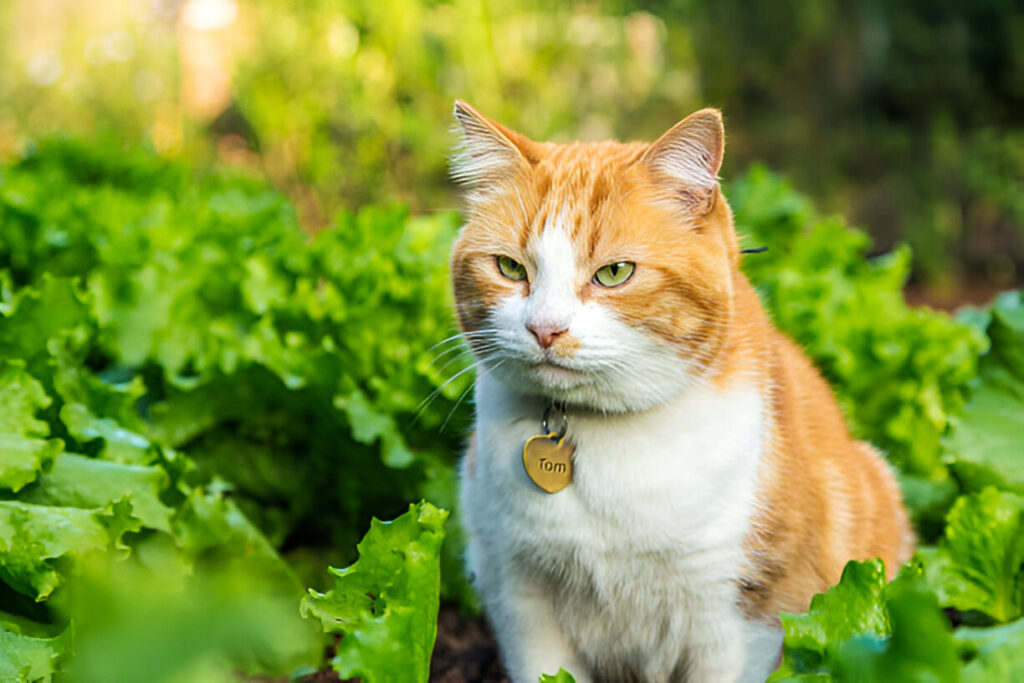
If your cat is inquisitive and enjoys trying new food varieties, there are some healthy and safe lettuce alternatives to offer them. These options ensure your cat’s needs and safety remain up front with a little bit of variety added in. Some excellent options include:
1. Cooked Carrots
- Why: Cooked carrots are soft, easily digested, and packed with nutritious ingredients like beta-carotene (a precursor of vitamin A) and fiber.
- How to Serve: Steam or boil carrots until tender, then chop into small, manageable pieces. Do not add any seasonings, butter, or oils.
- Benefits: Good for vision, immunity, and digestion.
2. Cucumber
- Why: These vegetables are soothing to the animal’s digestive tract due to their hydrating, low-calorie, and mild flavor-a flavor most cats seem to appreciate. They are also easily digested.
- How to Serve: Wash the vegetable well, peeling if necessary, and cut it into small pieces that are easily managed by the cat. Fresh and plain.
- Benefits: Adds moisture into his body and gives crunchiness, which most felines enjoy.
3. Pumpkin
- Why: Plain, cooked pumpkin is an excellent source of fiber, which aids digestion and helps prevent hairballs. Low in calories and highly digestible.
- How to Feed: The pure, canned variety, or after boiling fresh pumpkin until mashed to a very smooth consistency, may be fed in small quantities, about 1 to 2 teaspoons, as an appetizer or added into their daily feed.
- Benefits: Healthier digestion; less constipation; effective against hairball accumulation.
4. Cat Grass
- Why: Cat grass, typically wheatgrass, oat grass, or barley grass, is grown particularly for cats to eat. It satiates the natural instinct of your cat to chew on greens and helps in digestion.
- How to Serve: Grow cat grass at home or buy from pet stores. Place it in an accessible spot for your cat to nibble on.
- Benefits: Aids digestion, reduces hairballs, and stimulates the mind.
Other Safe Alternatives
- Zucchini: Low-calorie and easily digestible, zucchini can be cooked and cut into small pieces.
- Green Beans: Steamed or boiled green beans (unsalted and plain) can be a crunchy, low-calorie treat.
- Broccoli: Cooked, plain broccoli in very small amounts can be given as a rare treat. It must be soft and chopped into tiny bits.
Tips to Introduce New Foods
- Give a Small Amount: Give a small portion of the new food as an introduction to your cat.
- Look for Reactions: Be on the lookout for signs of digestive distress, such as vomiting, diarrhea, or loss of appetite.
- Serve Plain: Always avoid seasonings, oils, or additives, as these can be harmful to cats.
- Consult Your Vet: If you’re unsure about a new food, consult your veterinarian to ensure it’s safe for your cat’s specific health needs.
9. When to Avoid Feeding Lettuce
For most occasions, lettuce feeding is safe for your cat and quite entertaining to watch; however, there are a couple of situations in which your cat really shouldn’t get lettuce in the first place. Here is an in-depth look at the times you must avoid offering your cat lettuce:
1. Predisposed Digestive Issues
- Why: Cats with sensitive stomachs or those who have gastrointestinal problems, like frequently vomiting or having diarrhea or even irritable bowel syndrome, don’t handle lettuce well. Lettuce has healthy fiber in it for humans, but this can exacerbate digestive issues in cats and make them uncomfortable or worse.
- What to Do: If your cat has a history of digestive sensitivity, it’s best to avoid introducing lettuce or any new food without consulting your veterinarian. Stick to their regular, vet-approved diet to prevent unnecessary stress on their digestive system.
2. Chronic Illness
- Why: Cats, especially those with certain chronic illnesses like kidney disease or diabetes, have particular dietary needs that have to be very closely managed. Lettuce is low in calories and nutrients and could conflict with any dietary restrictions they may have, or interfere with their treatment plan.
- Kidney Disease: Cats with kidney disease require a diet that is low in phosphorus and low in protein. While as low as lettuce is in phosphorus, it’s best not to introduce foods that would interfere with their specialized diet.
- Diabetes: Diabetic cats need a controlled diet to maintain blood sugar levels. The introduction of new foods, like lettuce, may interfere with their appetite or digestion, complicating the condition.
- What to Do: Always check first with your vet before letting your cat eat lettuce, especially if your pet suffers from some sort of chronic ailment. He or she can guide whether it’s safe and, if so, how to integrate it.
3. Young Kittens
Why: Kittens below one year are still growing, and as such, a nutritionally complete diet is recommended for them to grow up healthily. Lettuce lacks all the essential nutrients needed for kittens in such tender age, including much-needed proteins, fats, and special vitamins and minerals.
- What to Do: Stick to feeding your kitten a high-quality, vet-recommended kitten food that meets all their nutritional needs. Avoid introducing lettuce or other non-essential foods until they are older and their digestive system is more mature.
Other Situations to Consider
- Allergies or Food Sensitivities: If your cat has a known allergy or sensitivity to certain foods, it’s best to avoid lettuce unless you’re certain it won’t trigger a reaction.
- Post-Surgery or Recovery: Cats recovering from surgery or illness should stick to their prescribed diet to ensure proper healing and avoid unnecessary stress on their system.
10. Consult with Your Veterinarian
Before introducing any new food into your cat’s diet, including lettuce, consult your veterinarian. They can provide tailored advice based on your cat’s age, weight, health status, and dietary needs. Veterinarian guidance ensures your cat’s health and safety.
Conclusion
While lettuce is not a necessary part of a cat’s diet, it can be a safe and occasional treat when offered in moderation. The high water content, low calorie count, and mild flavor make it an attractive snack for some cats. Always keep your cat’s main nutrition needs satisfied with a high-quality, meat-based diet, and let the lettuce be given only as an occasional treat. Knowing the specific nutritional needs of your feline friend is paramount, and the best source to confirm these will be your veterinarian.
This treat, if given out occasionally and at the right time, adds variety to your cat’s diet and will keep them healthy and well-fed. If you want more information on how to care for or feed your pet, go through our blog to stay updated on what’s best for your furry buddy.
Yuns Legdm is a passionate advocate for pet care and the founder of this website, dedicated to providing valuable information for fellow pet lovers and veterinary professionals worldwide. With a deep love for animals, Yuns created this platform to connect passionate pet owners with expert insights from veterinarians around the globe.
This website grows with you—the passionate pet owners and veterinary experts—creating a trusted space where knowledge, experience, and love for animals come together. Whether you’re seeking advice on pet health, nutrition, or general well-being, this platform is here to support you on your journey of responsible and loving pet care.

